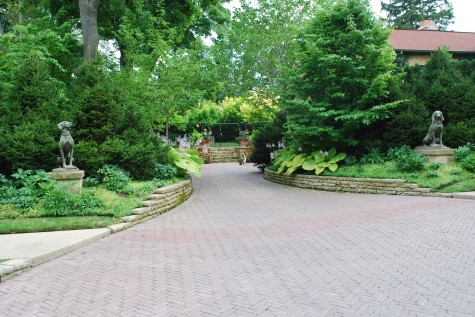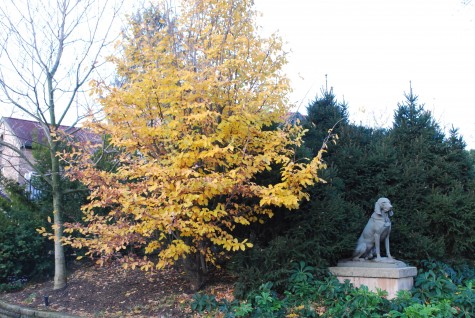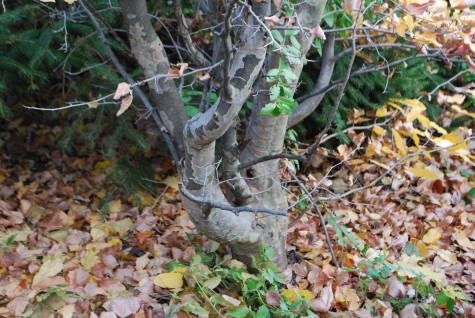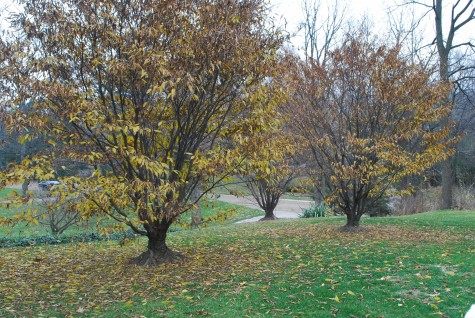Some trees delight gardening adults, and gardening adults only. They do not burst forth dramatically with a blizzard of white blooms in the spring-like a Snowdrift crabapple. There is not a frothy pink blooming ballerina of a crabapple tree in the bunch. They have no orange and green tulip like flowers on trees closing in on 100 feet tall-as in Liriodendron.
They have none of the drama of Chamaecyparis Nootkatensis pendula-the weeping Alaskan cedar. None of them are the robustly strong and stately shade trees that ought to be thriving in the tree lawn of every community-the lindens, the sugar and red maples, the zelkovas, the oaks, and sycamores. They are not a member of the corps of the tree elites-the beeches in all their forms hog most of the room in this category. The Japanese maples consume every spot not taken by the beech. European weeping beech, tri-color beech, Rohani Beech, fernleaf beech-the list is long. The dirt under a mature beech-fit for mulch. No beech suffers any close company in the absence of a feverishly devoted ground-gardener. Acer Palmatum, available in countless permutations-too precious for words. I see them much more than I should.
These architecturally interesting and subtly beautiful trees are not touchy-like the white cercis-and the dogwoods. Any summer day I can see an American dogwood in decline, a Kousa dogwood with wilted foliage and fungus, a birch struggling with borer or ice storm damage, a pin oak with foliage a stark and unpleasant bright yellow from chlorosis.
The adults only trees are never weepers. Weeping trees are hard to respect-admit it. Their tears are relentless. The weeping cherries with their gall-like grafts, the weeping larch, the Camperdown elms-I do not want to come home from work and look at drooping trees-just my preference. So what trees make my adults only list? First and foremost, Parrotia Persica. The Persian Ironwood tree. It grows 20-30 feet tall. It is intimately related taxonomically to the witch hazels. What’s to love here? This small growing multi-branched tree sports subtle witch-hazel like flowers in the spring. The bark exfoliates as the tree ages. An old Parrotia is a living sculpture with great dignity, and quiet presence. In my garden, it is utterly maintenance-free. Its leaves are disease and insect resistant-my grove of 5 looks great all season long. The fall color varies-but I can count on my Parrotias to hold their leaves really late, and last; most of the leaves hold throughout the winter. Should you be a gardener like me, you tour your garden regularly, and get up close. You give time to seeing it. My parrotias are incredibly beautiful.
On my short list of trees for gardening adults, I have the following criteria. Sculptural branch structure. Great bark. An overall gorgeous shape. Sturdily persistent. Beautiful spring and fall color-this means leaves that make my heart pound. This means the parrotias, the magnolias, the katsuras-and pictured here, the musclewood tree-carpinus caroliniana. Any tree that makes me think sculpture gets my grown-up attention.
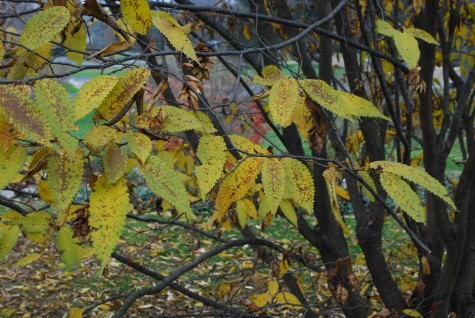
The leaves are subtly serrated and highly textured; the greenish-yellow fall color persists late into the fall. They branch very low to the ground. They are not showy or dramatic-they are handsome.
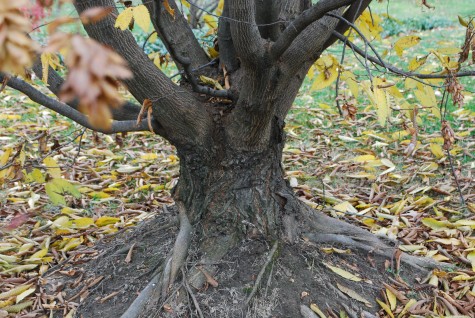
The trunks are indeed muscular. Their winter aspect is every bit as satisfying as the summer. I have other trees on this short list. The yellow wood, Cladrastis lutea probably grows the largest. Maackia Amurensis has glowing green bark, subtle summer flowers, and a beautiful mature shape-very stout, low, and very wide.
I planted these Lindera glauca var salicifolia quite a few years ago for a client. Lindera benzoin-the spicebush-is perhaps a better known species. The linderas are shrubs-but they grow large with a minimum of attention. This species in particular has blue-green willow like leaves. The texture of the foliage is quite striking. But it is the fall color- a pale peach-that is a showstopper. This color persists very long into the fall. �
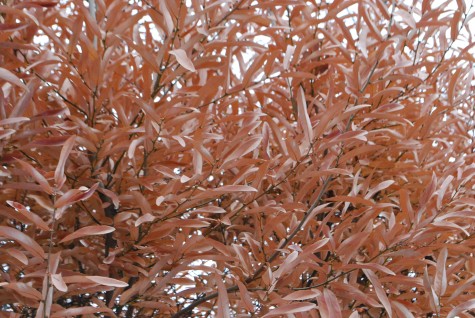
The peach will fade to a pale khaki color; the leaves will persist all winter. I took this picture this morning-still peachy November 21.
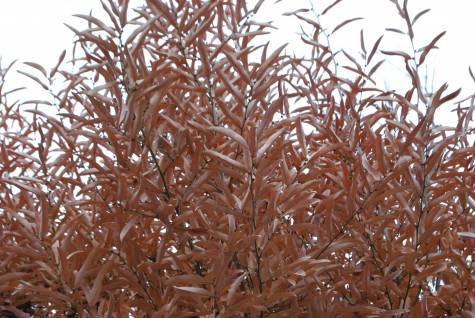
I have those days when I am more than willing to be seduced by anything that grows. In truth, there are probably few trees that I would turn away from my door. But today, when I tromped around and photographed the parrotias-what fun I had. Buck asked me what I was doing out there-he could see me from the window. I told him I was checking out how much my garden, and my gardening, had grown up.
